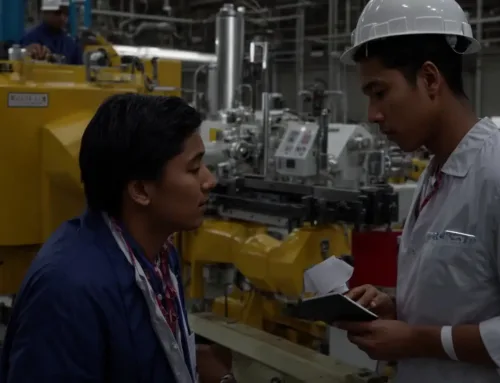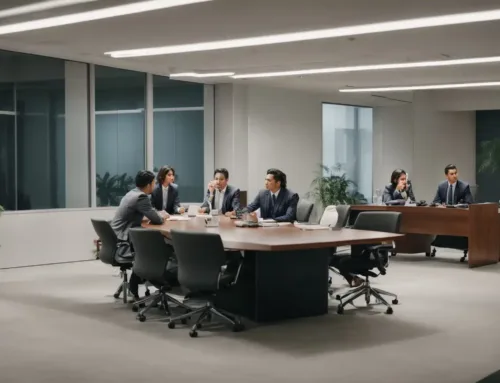Key Procedures for Preparing for Your CAOHC Certification
Preparing for a Certified Occupational Hearing Conservationist (COHC) or CAOHC certification can feel like a demanding task.
With a list of requirements to juggle, such as educational prerequisites, certification examination, to mastering key procedures like audiometry, otoscopy, and interpreting audiograms, it can become overwhelming.
Recognizing the need to guide hygienists, safety engineers and others intending to get certified, this article offers a comprehensive guide outlining all the necessary steps.
Keep reading to better realize where to start, what to expect, and how to successfully navigate through your journey to becoming a COHC.
Key Takeaways
- CAOHC Certification Is Designed for Professionals Implementing Hearing Conservation Programs in the Workforce
- The Certification Course Focuses on Proficiency in Audiometry, Otoscopy, Interpreting Audiograms, and Understanding Noise Surveys
- Eligibility Criteria for CAOHC Certification Include a Minimum Education Level or Professional Experience Equivalent
- The Course Covers Legislative Components Related to Occupational Hearing Conservation and MSHA Regulations
- Renewing the CAOHC Certification Involves Participating in Regular Refresher Courses Every Five Years
Understanding the CAOHC Certification
When it comes to CAOHC Certification, understanding its scope and prerequisites is key. The certification course offered by the Council for Accreditation in Occupational Hearing Conservation (CAOHC) is designed for audiologists, occupational hygienists, safety engineers, and other professionals tasked with implementing hearing conservation programs in the workforce. A prerequisite for the course, which can differ between synchronous or self-paced training methods, is a minimum education level or professional experience equivalent.
Successful completion of the certification examination is contingent upon individuals honing their skills in various areas. Proficiency in handling an audiometer and otoscope, performing audiometry and otoscopy, understanding and interpreting audiograms, noise surveys, and noise measurement are essential parts of the training program. The course also focuses on providing a refresher about the audiology practicum, a necessary step for becoming a Certified Occupational Hearing Conservationist (COHC).
To facilitate learning and increase interaction, the course director holds daily zoom meetings. Morning meetings are the norm, and they offer opportunities for real-time question-and-answer sessions to clarify any doubts. Students receive their certification number and updates on course dates through these meetings:
- Course introduction dates.
- Testing program dates.
- Hearing screening training course dates.
- Hearing protection training program dates.
- Final certification examination pass announcement dates.
Students in the certification course also have access to various course resources through web sites, bolstered by a robust security system. This includes access to extensive background resources on hearing conservation, necessary for the monitoring program. Tip: Read the cookie notice on these websites carefully as they illustrate how important user security and data privacy is to CAOHC.
Identify the Eligibility Requirements for CAOHC Certification
Knowing the eligibility criteria for CAOHC certification helps prospective students best prepare for the application process. Doctors of Audiology, safety engineers, and hygienists who have completed their necessary qualifications and training are typically primed for this training course. Prior experience in conducting hearing tests or working in the hearing conservation domain is often viewed as beneficial, although it’s not a mandatory prerequisite.
CAOHC has set the bar high, and the certification is seen as a mark of excellence in the industry. A core emphasis of the course is training professionals to conduct comprehensive hearing screenings using an audiometer and otoscope. Additionally, teaching them to interpret the results accurately for diagnosing a potential Hearing Conservation Program (HCP) and recommending suitable hearing protection is integral.
The Certification process also dwells on the legislative component of the Occupational Hearing Conservation (OHC) and MSHA, a necessity for those planning to work in the noise measurement and reduction field. When preparing for the certification examination, applicants will find it beneficial to keep abreast of the relevant laws and regulations:
- Overview of Occupational Safety and Health Administration (OSHA) regulations.
- Familiarization with Noise Control Act and Hearing Conservation Amendment.
- Understanding of Mine Safety and Health Administration (MSHA) regulations.
- Detailed study of Hearing Conservation Program (HCP) regulations.
Lastly, candidates aspiring to become a Certified Occupational Hearing Conservationist (COHC) after clearing their CAOHC certification should be prepared to engage in constant learning. As the field of audiology continues to evolve, keeping up with the latest practices and guidelines for hearing conservation is paramount. This commitment is assessed via a refresher course, which needs to be completed over the specified course dates for maintaining the certification.
Preparing for the Audiometric Courses
A significant part of the training course entails mastering audiometric procedures. Aspiring CAOHC-certified professionals are expected to acquire efficient, hands-on experience with both an audiometer and otoscope, tools central to audiometry and otoscopy. More than just technical skills, they’re instructed on patient communication and management techniques during a hearing screening.
Classroom or Zoom meetings constitute theoretical instruction, where semantics of medical audiograms, basics of noise surveys, noise measurement, and fundamentals of a monitoring program are discussed. These sessions aim to foster a thorough comprehension of hearing conservation. And, it is crucial for students to actively participate and ask questions, to gain maximum benefit.
Practicum, another integral part of the CAOHC certification, provides candidates an unparalleled opportunity to apply theoretical knowledge into practice. Under the guidance of the course director, they carry out hearing tests, interpret audiograms, analyze noise data, and formulate suitable hearing protection plans. It has a set structure that includes:
- Hearing screening session with use of audiometer.
- Interpreting audiograms session.
- Noise data analysis session.
- Planning and executing a sample Hearing Conservation Program session.
Mastery in comprehension and execution of these tasks signifies readiness for the certification examination. The preparation culminates in a final refresher where they revisit every aspect of the course over a few days. As CAOHC certification is nationally recognized, candidates with this certification number thrive as authorities in audiometry and hearing conservation.
Fulfilling the Educational Requirements
When embarking on the journey to obtain the CAOHC certification, one cannot bypass the critical aspect of the educational requirements. This certification demands a specific level of educational preparedness related to audiology and hearing conservation. Candidates should check with the course director concerning specifications about mandatory qualifications and equivalent experiences.
A candidate’s preceding opportunities and experiences can shape their performance during the certification course. For instance, those with previous certifications or experiences related to audiometry, otoscopy, or noise measurement, such as hygienists, safety engineers, and audiologists, can make the best of the extensive training afforded in the certification program. Prior exposure can ease the progression through the course and aid in the assimilation of complex concepts.
Considering the dynamic nature of the audiology field, it is not just the tangible prerequisites that count but also a continuous learning attitude. Large portions of the coursework, such as audiometry, hearing screening, noise surveys, and hearing protection formulation, require an ingrained commitment to learning and updating oneself as the field continues to evolve. Those with a fostering learning mindset often excel in the final certification examination.
Ultimately, the CAOHC certification is a testament to the candidate’s prowess in audiology and their commitment to the cause of hearing conservation. This certification stands not just as a symbol of knowledge but also as a reflection of the individual’s dedication towards mitigating hearing loss and improving quality of life. Armed with this certification number, they are equipped to make a positive difference within the ambit of their professional capabilities.
Examination: What to Expect
The certification examination is the cornerstone of the CAOHC certification pathway. This is a comprehensive test that evaluates the applicability of knowledge gained during the course. Candidates can expect a selection of questions covering the entire syllabus, ranging from theoretical concepts to practical applications of audiology and hearing conservation.
The test format is such that it assesses the candidate’s practical knowledge as well as theoretical understanding, making careful preparation paramount. Conceptual clarity on topics like audiometry, otoscopy, noise measurement, and interpretation of audiograms form the foundation of good performance in the examination. Also, proficiency in the handling of tools such as the audiometer and otoscope, as well as demonstrating sound judgment in hearing conservation cases, is appreciated.
Success in the certification examination can be achieved by emphasizing essential components during the preparatory phase. Prioritizing the right set of subjects, applying learned theory in practical scenarios, and having clear, practical-oriented preparation will be beneficial. The examination tends to focus on:
- Audiometric testing procedures and interpretation of audiograms.
- Noise surveys and noise measurement readings.
- Understanding and execution of a Hearing Conservation Program (HCP).
- Recommendations for individualized hearing protection.
Upon successful completion of the examination, candidates are awarded the CAOHC certification, essentially validating them as certified professionals in the field of audiology. With this certification number, the Certified Occupational Hearing Conservationist (COHC) is crucially equipped to lead hearing conservation programs and shape a noise-free environment for workers. Remember, the journey towards CAOHC certification is a continuous learning process; course dates may end, but the appetite for knowledge should not.
Maintaining and Renewing Your CAOHC Certification
Passing the certification examination and acquiring the CAOHC certification number represents only one milestone in a journey of continuous professional development. Like many other professional certifications, maintaining and renewing the CAOHC certification is a crucial part of the process. This ensures that the Certified Occupational Hearing Conservationist (COHC) stays updated with the latest developments in the field.
Keeping the certification valid involves participating in regular refresher courses. These programs, scheduled on specified course dates, are aimed at updating professionals on the latest advances in audiology, Hearing Conservation Program (HCP) regulations, and noise measurement technologies among others. An active participation yields more than just qualifying credits; it galvanizes professionals with knowledge to carry out their day-to-day responsibilities more efficiently.
The CAOHC advises a refresher course once every five years as a minimum requirement. This renewal process includes several vital stages that keep the certified person relevant and updated. Each stage is an integral part of the renewal process, which includes:
- Timely registration for the refresher course.
- Active participation in the scheduled course.
- Completion of assignments and tests during the refresher.
- Acquisition of the certification renewal from CAOHC after successful completion.
Failure to follow the renewal process might put the CAOHC certification at the risk of becoming inactive. Professionals should monitor their certification status, maintain records of their CEUs, and keep an eye on the renewal dates. With the right dedication and commitment to continuing education, maintaining the CAOHC certification is an achievable task that empowers professionals to affirm their prowess in audiology and hearing conservation.







